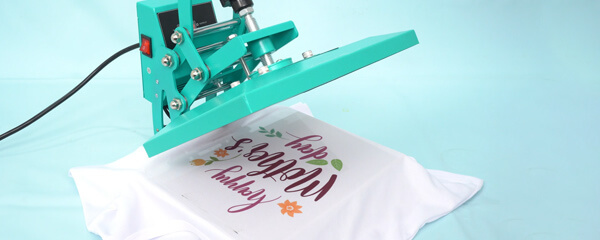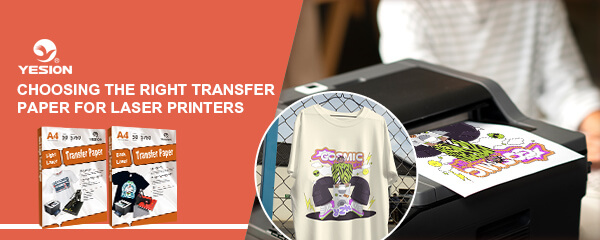
Transfer paper: Is inkjet or laser better?
2024-01-23
The Ultimate Guide to Choosing Holographic Vinyl Colors
2024-01-30Transfer paper is a versatile tool used in various applications, including arts and crafts, DIY projects, and commercial printing. When it comes to laser printers, choosing the right transfer paper is essential to achieve high-quality and long-lasting results. In this article, we will discuss the factors to consider when selecting transfer paper for laser printers, the different types of transfer paper available, and provide tips for achieving the best results.
Factors to Consider
Before diving into the different types of transfer paper, it’s important to consider a few factors that will help you make an informed decision:
1. Printer Compatibility
Ensure that the transfer paper you choose is compatible with laser printers. Laser printers use a different technology than inkjet printers, and not all transfer papers are designed to work with laser printers. Using incompatible transfer paper can result in poor image quality, smudging, or even damage to your printer.
2. Paper Size and Thickness
Consider the size and thickness of the transfer paper. Different projects may require different paper sizes, such as letter-size (8.5″ x 11″) or tabloid-size (11″ x 17″). Additionally, the thickness of the transfer paper can affect the durability and feel of the final transfer. Thicker paper may be more suitable for heavy-duty applications, while thinner paper can provide a softer and more flexible transfer.
3. Fabric Compatibility
Think about the type of fabric you will be transferring the image onto. Some transfer papers are specifically designed for cotton fabrics, while others work well with synthetic fabrics like polyester. Make sure to choose a transfer paper that is compatible with the fabric you intend to use to ensure optimal results.
4. Image Quality and Durability
Consider the level of image quality and durability you require. Some transfer papers are designed for high-resolution images and vibrant colors, while others may be more suitable for simple designs or black and white prints. Additionally, the durability of the transfer is crucial, especially if it will be exposed to frequent washing or harsh conditions.
Types of Transfer Paper
Now that we have discussed the factors to consider let’s explore the different types of transfer paper available for laser printers:
1. Laser Light Fabric Transfer Paper
Laser light fabric transfer paper is designed for white or light-colored fabrics. It works by transferring the image onto the fabric, allowing the fabric color to show through the design. This type of transfer paper is typically thinner and provides a softer feel after transfer. It is ideal for creating custom t-shirts, tote bags, and other light-colored fabric items.
2. Laser Dark Fabric Transfer Paper
Laser dark fabric transfer paper is specifically designed for dark-colored fabrics. It uses a white base layer to ensure that the colors of the transferred image remain vibrant and visible on dark backgrounds. This type of transfer paper is generally thicker and provides a more opaque transfer. It is perfect for creating designs on black or dark-colored t-shirts, hoodies, and other dark fabric items.
3. Multi-Purpose Transfer Paper
As the name suggests, multi-purpose transfer paper can be used on both light and dark-colored fabrics. It offers versatility and convenience, allowing you to create transfers on a wide range of fabric colors. This type of transfer paper usually requires a heat press for optimal results and durability.
How to use yesion laser transfer paper?
Tips for Best Results
To achieve the best results when using transfer paper with laser printers, consider the following tips:
1. Follow the Instructions
Always read and follow the instructions provided by the manufacturer. Each type of transfer paper may have specific printing and transfer instructions that need to be followed for optimal results.
2. Test Print
Before transferring your design onto the final fabric or surface, it’s a good idea to do a test print on regular paper. This will allow you to check the image quality, colors, and positioning before committing to the transfer.
3. Prepare the Fabric or Surface
Ensure that the fabric or surface you are transferring the image onto is clean, dry, and free from any wrinkles or imperfections. Smooth surfaces and wrinkle-free fabrics will result in a better transfer.
4. Use Heat Press or Iron
Most transfer papers require heat to transfer the image onto the fabric or surface. Follow the recommended temperature and time settings for your specific transfer paper. Using a heat press is generally recommended for more professional and durable results, but an iron can also be used for smaller projects or personal use.

transfer design wiht heat press
5. Wash and Care Instructions
Follow the recommended wash and care instructions provided by the manufacturer. Some transfer papers may require special care, such as washing inside out or avoiding bleach. Proper care will help maintain the quality and longevity of the transferred image.
Choosing the right transfer paper for laser printers is crucial to achieve high-quality and long-lasting results in your projects. With the right transfer paper and proper techniques, you can create stunning and customized designs on various fabrics and surfaces using your laser printer.
YESION is a professional transfer paper manufacturer that has earned the trust and praise of customers with its high-quality products and satisfactory services. Whether for DIY projects or commercial applications, YESION’s transfer paper is a reliable choice that helps users achieve excellent transfer results. If you have any questions or would like to learn more about YESION’s products and services, feel free to contact us. We will provide you with professional support and assistance.

